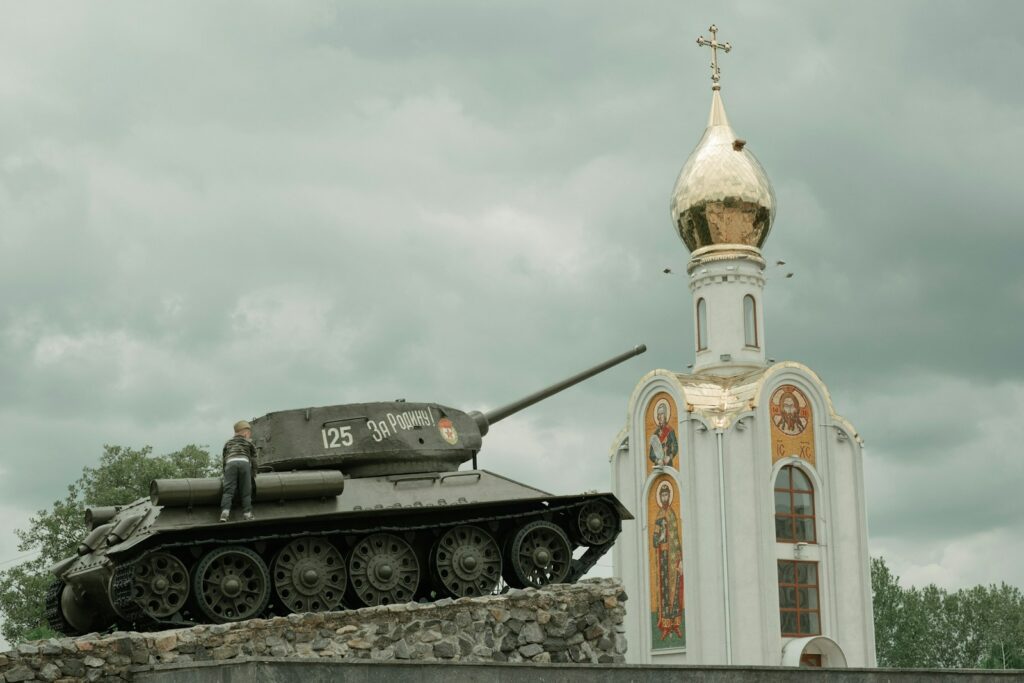Garvan Walshe is a former national and international security policy adviser to the Conservative Party
In the remote Moldovan region of Transnistria, the Russia-backed breakaway government is flirting with joining Russia.
When the Soviet Union collapsed, Moldova, like the other Republics of the Soviet Union, dashed independence. However Russian interference prevented the new state (like in Georgia, which was unable to keep control of the region of Abkhazia) from exercising control of all the Moldovan Soviet Republic’s territory. Transnistria is the name given to the Kremlin-supported breakaway region, which lies on the Eastern side of the Dniester River but in Moldova, rather than Ukraine, and in which perhaps 1500 Russian “peacekeepers” are based.
Its creation was part of a Russian strategy of creating frozen conflicts – enclaves and regions inside former Soviet States, often with significant ethnic Russian populations, and, not unrelatedly, former Soviet military installations, that could be used to influence or destabilise the neighbouring state.
Though Russia’s preferred tactic is to ensure the rise of a friendly power broker to organise the society (regardless of whether he takes formal office, as Viktor Yanukovich did in Ukraine, or hides behind the curtain, like Bidzina Ivanishvili in Georgia) creating break-away regions is a useful second-best.
The weak Russia of the 1990s could only hold on to a few of these, including Abkhazia. It was prevented from using the same tactics to destabilise the Baltic states before they could join the EU and NATO, but seized South Ossetia from Georgia in 2008, and Crimea and most of Donetsk and Luhansk provinces from Ukraine in 2014. Ironically, the full-scale invasion of Ukraine cut Transnistria off completely to its east, while also ensuring Western democracies provided significant security and economic help to Moldova.
Today, the Transnistrian rubber-stamp parliament has decided to hold one of its extremely rare sessions. It has been let known that among the topics it would consider — the region is hardly a paragon of transparent public administration — would be a request to ask Russia to annex it.
A formal annexation request is unlikely, and, in any case would be purely symbolic because Transnistria is sandwiched between Ukraine and Moldova. It could even give Kyiv an excuse to intervene and seize an enormous Soviet-era ammunition dump that Ukrainian forces could put to good use.
The talk of annexation should rather be understood as another Russian attempt to destabilise Moldova, over which it has had little influence since pro-Western president Maia Sandu won elections in 2020.
Sandu is up for reelection in December, and though she will probably win, she will have to overcome a campaign of Kremlin-backed destabilisation, organised under the rubric of the banned Shor party (dissolved as unconstitutional last year).
Shor is named after its leader llan Shor a fugitive from Moldovan justice who escaped to his native Israel after being convicted of masterminding a money laundering scheme worth almost $1 billion. It is unlikely to be a coincidence that Shor visited Moscow, and publicly met Russian officials, in early February this year.
His visit came close to the anniversary of an attempted coup, in which the Shor party was heavily implicated, that had been planned under the cover of protests against energy price rises. That coup was foiled: intelligence prevented personnel travelling in disguise from Russia, Belarus, Serbia, and Montenegro from getting to Moldova, and allowed Moldova’s government to publicise the attempt, denying the Kremlin the advantage of surprise.
But with Sandu’s term ending, and Moscow feeling the tide turning in its favour, we should expect further destabilisation.
Overlooking Transnistria is more evidence of the West’s failure to grasp the Russian agenda. Putin’s full-scale invasion of Ukraine in 2022 is less an end in itself than a large element in a mission to reverse the concessions Russia was forced to make to its former colonial subjects after the Soviet collapse. Intervention in Georgia, subversion in Moldova, intimidation of the Baltic States, suborning of Hungary and Slovakia, and threats to Poland and Finland are all part of the same revanchist strategy.
The aim is imperial — to shift the European balance of power towards the Kremlin and restore Russia to a position from which it can intimidate Western Europe and exercise the influence on world affairs it believes it is due. Corruption, intimidation, subversion disinformation, and outright violence are its weapons.
The advantage, for a country with an economy the size of the Benelux, is that outside Scandinavia, the Baltics, Poland, and Czechia this outrageous ambition has yet to sink in. Macron’s comment on Monday that “Russia needs to be defeated” was immediately questioned by German Chancellor Olaf Sholz. No Western European state, even the UK, has moved its military production onto a war footing.
Though money is extremely tight, the Chancellor must pay attention to British munitions production in his budget next week. Transnistria may be small and obscure, but the antics of its Russia-backed government are another warning of how comprehensive Putin’s ambitions to restore the old USSR have become.
Source link : https://conservativehome.com/2024/02/29/from-garvan-walshe-the-latest-russian-plot-to-destabilise-europe-is-unfolding-in-transnistria/
Author :
Publish date : 2024-02-29 03:00:00
Copyright for syndicated content belongs to the linked Source.
